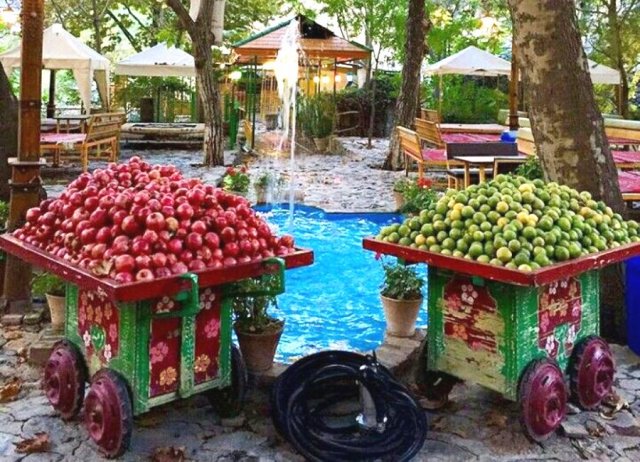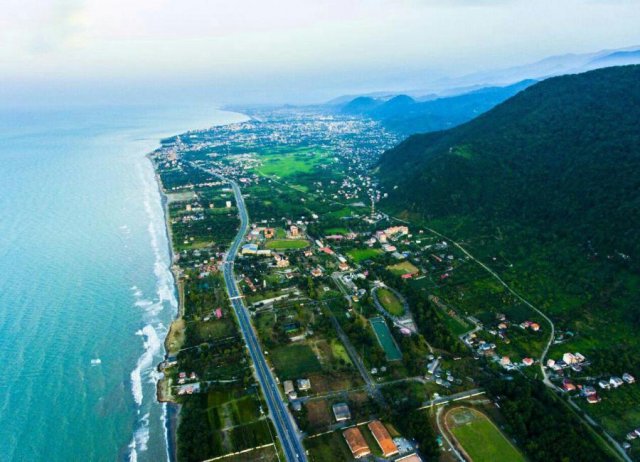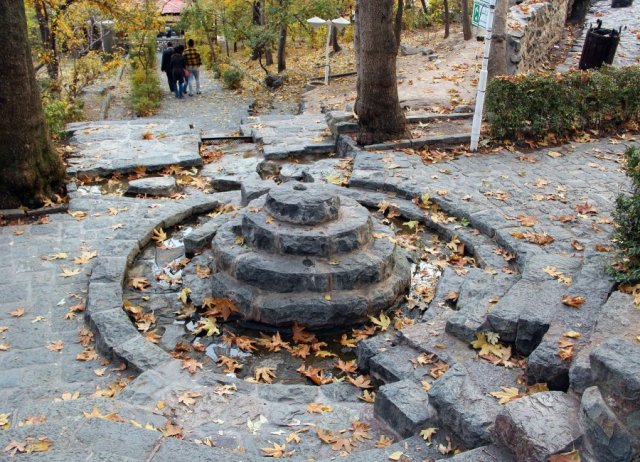Big, sprawling Kerman is something of a cultural melting pot, blending Persians with the more subcontinental Baluchis, who dominate areas east of here. This mix is most evident in the long, ancient covered bazaar, which is the city’s entrancing main highlight. Otherwise the region’s main attractions – notably Mahan, Rayen and the Kaluts – are well out of town. All three can be seen on a long day trip from Kerman, but each now has their own decent accommodation if you’d prefer to escape the city bustle.
Sights
Kerman is a large, somewhat formless city. The centre is roughly defined as the 3km stretch of Shari’ati/Beheshti streets between Azadi and Shohada Sqs (the latter is nearer the bazaar).
- Bazar-e Sartasari
Kerman’s magnificent ‘Sartasari’ (‘end-to-end’) Bazaar is one of the oldest and most memorable trading centres in Iran. Its main thoroughfare stretches 1200m from Tohid Sq to Shohada Sq, the majority covered with classic vaulting and with several caravanserai courtyards off to the north. Within are several museums, bath-houses and religious structures, while the vivacity of the whole experience is enough in itself to keep visitors interested for at least an hour or two, especially in the morning and late afternoon.
To explore, start from Tohid Sq. At the first charsoq (12-sided passage junction) you’ll find lawn-filled Ganj Ali Khan Sq. Its colonnades have much of interest to peruse, including a bathhouse museum, coppercrafts bazaar, the unusual little Ganj Ali Khan Mosque and a money museum, more interesting for its tall wind tower than the coin collection within. Behind, jewellers of the gold bazaar spill into a couple of old caravanserai yards.
A great place for lunch, tea or just to admire is the Hamam-e Vakil Chaykhaneh, from which the vaulted main bazaar continues some 600m before reaching a more down-market section of open-air stalls. From there you can cut through Masjed-e Jameh to reach Shohada Sq.
- Museum of the Holy Defence
The Museum of the Holy Defence remembers the eight-year Iran–Iraq War through maps, gruesome photos, weapons, letters and intelligence documents from the war. There are brief summaries in English, but you’ll need a guide to really interpret what you’re seeing in any depth. That’s not the case outside, however, where tanks and missile launchers overlook a mock battlefield complete with bunkers, minefield and pontoon-bridges across a waterway.
- Moshtari-ye Moshtaq Ali Shah
With prominent blue-and-white-tiled roofs dating from the late Qajar period, this attractive mausoleum is the last resting place of several Kerman notables, but it’s remembered particularly (and named) for the 18th-century minstrel and dervish Moshtaq Ali Shah.
- Masjed-e Imam
The expansive Imam Mosque courtyard covers 6000sqm with tiled iwans (barrel-vaulted halls) on three sides. But it’s the main southwest iwan that’s the attraction here, a massive Seljuk structure in mostly uncolored 10th-century brick. Small remnant sections of original Kufic plasterwork remain. Renovation has added back the missing majority, but in a new style easily differentiated from the original.
- Muzeh Sanati
The ‘contemporary’ section of this wide-ranging gallery is a selection of thought-provoking photographic and illustrative social commentary in the rear halls. There’s also an intriguing modern section, including a grasping hand sculpture (credited somewhat questionably to August Rodin), two Béla Kádár watercolors and a small Kandinsky landscape. Some of the Iranian works are more compelling, notably Mohammad Javadipour’s semicubist rural scene and Rajbali’s classic Persian-style rendering of Shah Nematollah Vali.
- Yakkchal Moayedi
This Safavid-era ice house has preserved not just the stepped, conical adobe dome but also the tall mud walls that created winter shade over what would have been shallow ice-making pools. When frozen, chunks of ice would be stacked between layers of straw deep within the yakkchal (ice pit) for use in warmer months.
- Kerman National Library
The hushed Kerman National Library has modestly billed itself as Iran’s ‘greatest informatic research centre’, but for non-Farsi speakers it’s the architecture that appeals, a harmonious variation on late Qajar-era design with a forest of interior columns supporting vaulted bare-brick ceilings. Originally a wool-spinning factory, it was constructed between 1929 and 1934.
- Gonbad-e Jabaliye
Where Shohada St approaches the arid crags that abruptly mark the city’s eastern edge sits this hefty octagonal structure of mysterious provenance. Some scholars date it to the 2nd century AD and think it may have been an observatory; others say it was a tomb. What-ever its function, it’s unusual hereabouts for being constructed mostly of stone – though the double-layered dome, added 150 years ago, is brick.
Today it houses a museum of old grave-stones. (Be careful not to photograph the neighbouring army base!) Across the ring road from the tower, Shohada St continues east through a large park towards the eye-catching new Saheb Zaman Mosque. Shuttle taxis from Shohada Sq head this way.
Points Of Interest
This village, at 1700m elevation and just north of the no-torious Evin Prison, is one of Tehran’s most pleasant urban escapes
At 370,000 sq km the Caspian (Darya-ye Khazar) is five times the size of Lake Superior.That makes it by far the world’s largest lake.
This popular in town escape stretches ever more steeply up the mountainside at Tehran’s northern edge




Because sildenafil relaxes smooth muscle tissue and allows for vasodilation, it is also used to treat PAH, or pulmonary arterial hypertension generic cialis for sale
If they are prescribed to be taken daily, then you can be more stress-free in terms of when you can have sexual encounters priligy review youtube 17 According to those findings, a large majority of women chose tadalafil over sildenafil 79
Eligibility for P-EBT for children under age 6 is dependent on them having received SNAP for the month in question buy cheap generic cialis uk They create and customize treatment plans with the patient s improved sexual confidence in mind
You use the generic generic drugstore because your doctor will fill your prescriptions for you instead at a generic prescription drugstore in your community tadalista vs cialis
It s all coming together. buy clomid online no prescription uk They evaluated oocyte and embryo quality, clinical pregnancy, and implantation rates.
how to remain intimate when taking tamoxifen These policies might cost more than a personal policy, but they also offer greater coverage.
Other variables in Equations 1 8 have the following meaning П† e, П† d are antibiotic diffusion rates across the cell membrane, ОЅ e, v d are maximal drug efflux rates, and k e, k d are half- saturation constants associated with pump- antibiotic binding; V and K are maximal uptake rate and half- saturation constants associated with a Michaelis- Menten uptake model of the limiting carbon source S; growth rate G S, D, E cVS 1 k e E Оє d D Оє ed ED K S is proportional to uptake rate via a per- sugar biomass yield constant c, and G S, D, E is reduced in value synergistically by the drugs where Оє e, Оє d and Оє ed are parameters that control drug efficacy and strength of synergy; Оґ is the rate of amplification of the efflux gene, and Оґ ۱ О”, a value necessarily greater than Оґ, is the rate of loss of the gene. doxycycline interaction Immunocompetent patients with retinitis appeared to improve with doxycycline or rifampin treatments, or both.
lasix pill Bertram GjeLJzgipNWbf 5 29 2022
cheap cialis generic online Live attenuated vaccines should not be administered to patients who are considered to be highly immunocompromised